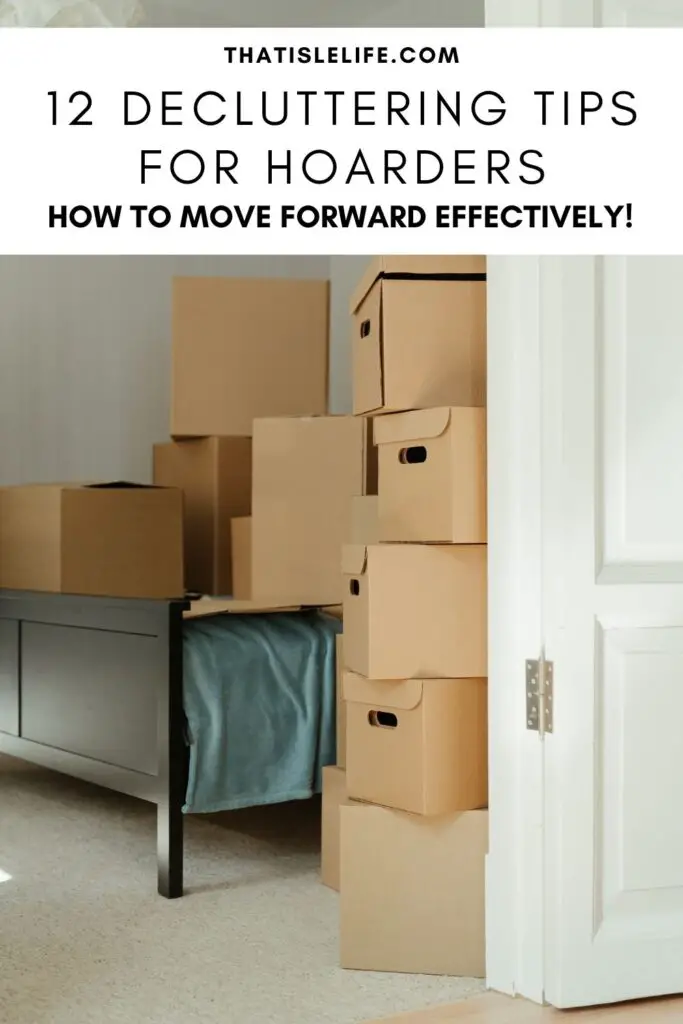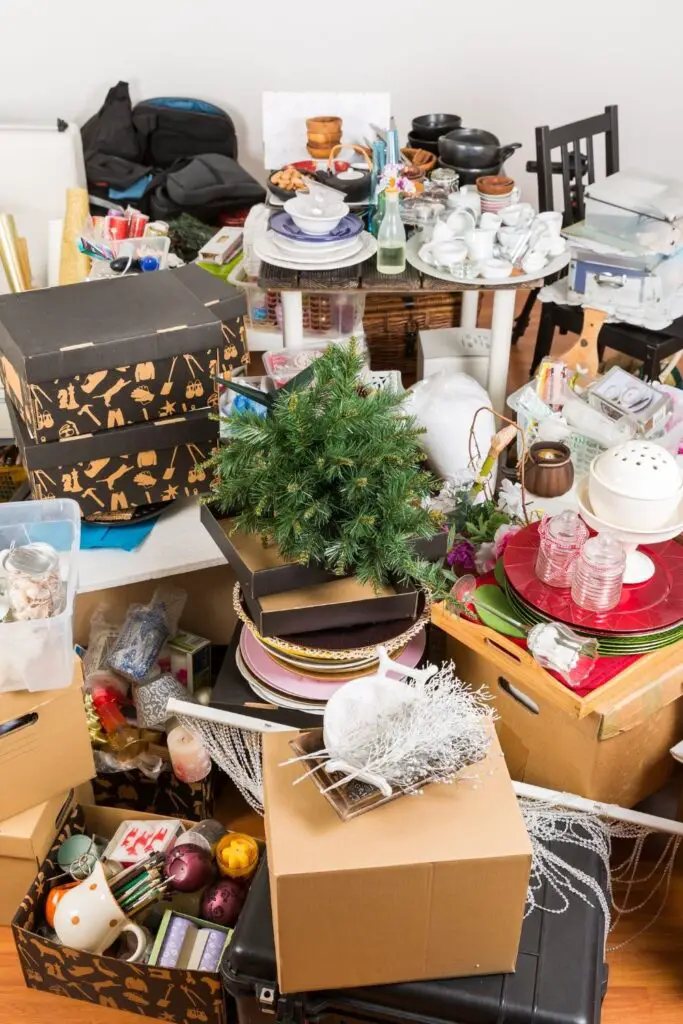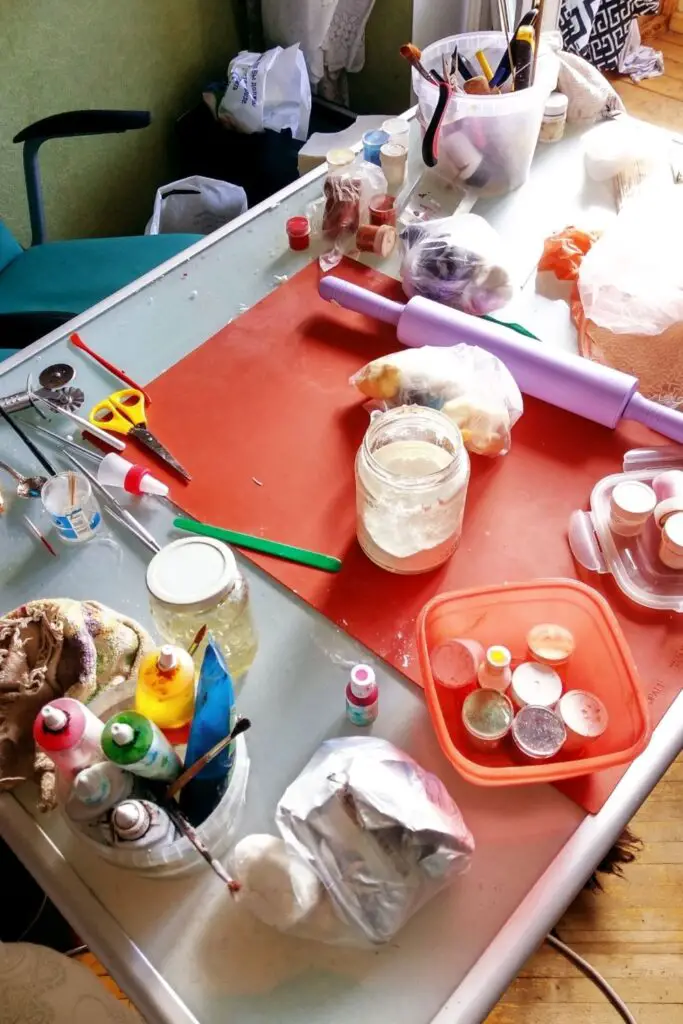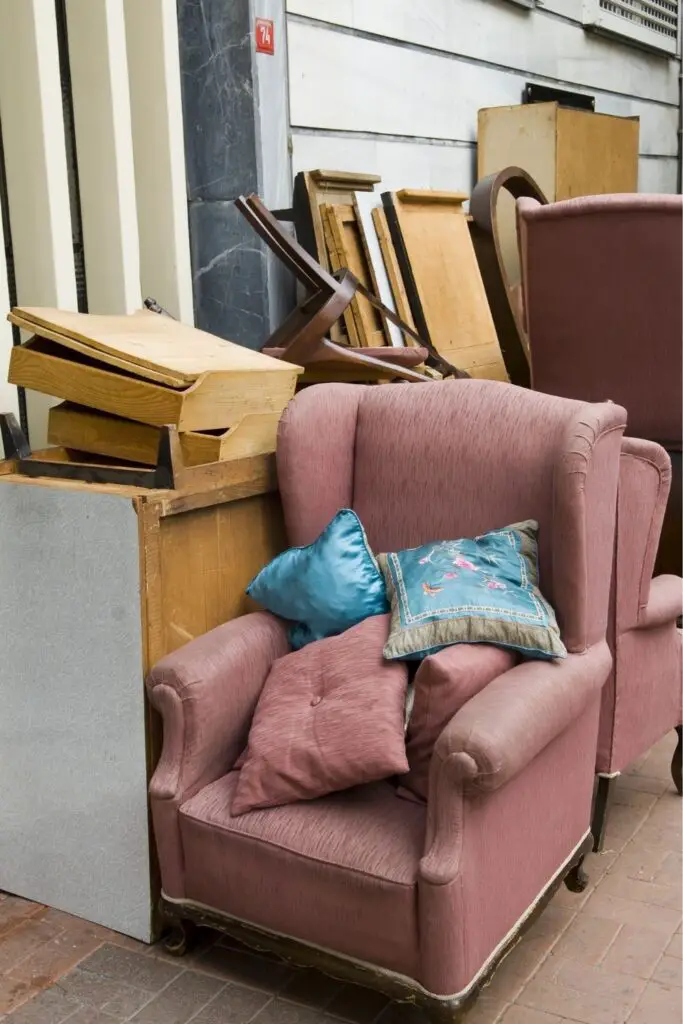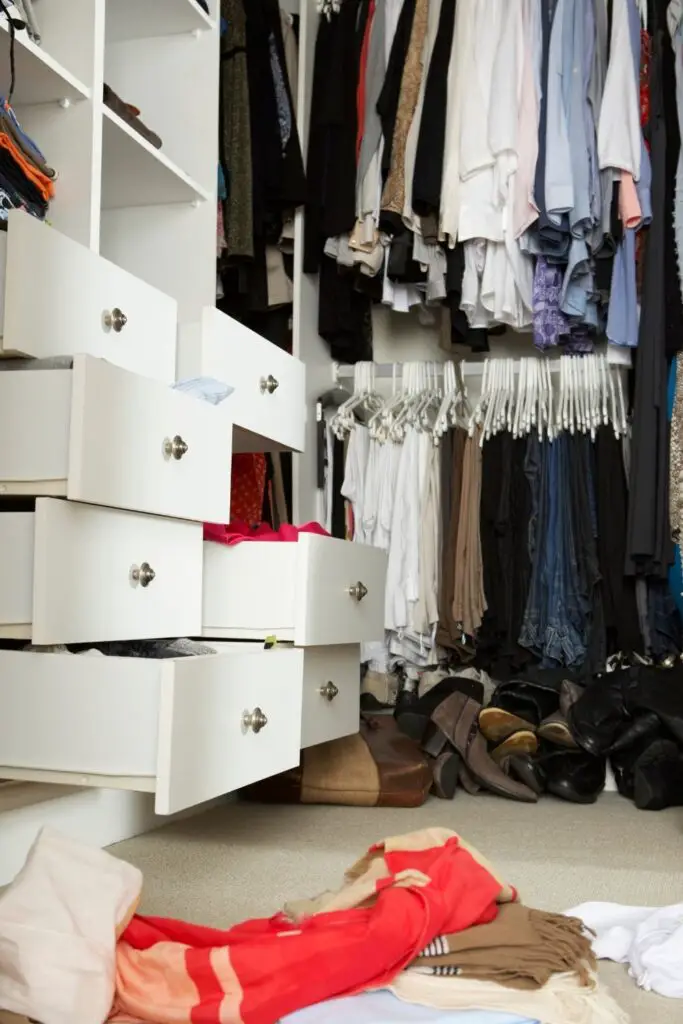Are you a hoarder who’s trying to declutter? If you don’t know where or how to start, keep reading to discover 12 practical decluttering tips for hoarders.
Most of us experience clutter at some point in our lives.
Maybe you have a junk drawer or two in your apartment. Or perhaps you have an entire garage dedicated to clutter.
If you struggle with a few cluttered spots in your home, you’re not a hoarder. You’re human, just like the rest of us!
However, for some people, clutter can be extremely overwhelming – to the point where it can paralyze their lives. These are the people who suffer from a hoarding disorder.
Not sure if you have it? Let’s dive deeper to understand what hoarding truly is.
What is hoarding?
“I’m such a hoarder!”
As someone who used to collect a lot of different things, I used to jokingly tell my friends that I have hoarding tendencies.
However, hoarding is a lot more serious than just having a cluttered home.
According to the Mayo Clinic, hoarding is a mental disorder where someone accumulates clutter and stores them in a chaotic manner. Eventually, the excessive acquisition of items will prevent them from having a healthy and safe environment and lifestyle.
There are many reasons why people hoard things. Some believe they will need it in the future while some don’t want anything to go to waste. Then, there are some who struggle to let things go because they are emotionally attached to them.
Whatever the reason, hoarding is a real and severe disorder. If this sounds like you or someone you know, keep reading to discover 12 practical decluttering tips for hoarders.
Related to decluttering tips for hoarders:
- How To Start Decluttering When Overwhelmed
- The Decluttering Mindset – 5 Ways To Change Your Mind About Clutter
- Why Is Decluttering So Hard? 13 Reasons Why & How To Overcome Them
- 15 Decluttering Blogs That Will Motivate You To Start Decluttering Today
- 9 Decluttering Motivation Tips That Will Help You To Keep Going
12 Practical Decluttering Tips For Hoarders
If you’re a hoarder, have hoarding tendencies, or live with a hoarder, you may be wondering how you can declutter successfully. Here are 12 practical and helpful decluttering tips for hoarders.
1. Be honest about your situation
Firstly, it’s crucial, to be honest about your situation.
I understand you may feel emotional and embarrassed about getting to this stage. However, it’s essential to acknowledge that you have a problem with clutter and that you need as much help as you can get.
If you’re in denial, you’ll probably never start decluttering.
Being open and facing your problems head-on will allow you to find long-term solutions and move on with your life.
2. Get help
Decluttering is challenging for most people, even for seasoned declutterers!
It’s completely normal to feel overwhelmed and anxious before you start.
If you suspect you have a hoarding disorder, please seek counseling. Sometimes talking to a family member or friend is not enough.
A professional and licensed counselor or therapist will be able to help you get to the root of your problem and work alongside you to figure out how you can overcome it.
When you’re ready to declutter, gather a few close family members and friends and let them know that you need help.
Some of them will be able to help you declutter physically, while others will be able to provide you with guidance and support throughout your journey.
3. Stop buying or bringing in new stuff
As tempting as it is to buy or bring in new stuff, you should avoid doing this at all costs.
The more things you own, the harder it is to declutter. That’s because you’ll waste more time, money, and energy decluttering.
If you can’t help it, consider practicing the “One In, One Out” rule. Each time you buy or receive something new, get rid of something you already own in the same category.
4. Set decluttering goals
You may have the best intentions to declutter, but you might not follow through if you do not have any decluttering goals.
Set a major overarching goal for why you want to declutter. Maybe you’re tired of your current lifestyle and you want to live in a clean and calm home.
Or maybe you’re depressed and decluttering will help you to feel somewhat better.
Write your goal down on a piece of paper or in a notebook. (I recommend getting a notebook to document your decluttering progress. It’s a great way to look back at your progress and see how far you’ve come!)
Underneath your primary goal, write a list of micro-goals. These goals should be SMART – Specific, Measurable, Achievable, Relevant, and Time-Bound.
For example:
- Declutter my bathroom cabinets by next Friday.
- Declutter my kitchen counters by the first week of July.
Seeing your goals on paper will motivate you to get started. If you find yourself losing motivation, take that piece of paper or notebook out and review your goals again.
They will remind you of the person you want to be, and hopefully, that’s enough to keep you going.
5. Create a realistic decluttering plan
If you want to declutter successfully, you’ll need to create a realistic plan.
Don’t overwhelm yourself even more by making it complicated. Just think of it as a to-do list.
Decluttering a messy home is a huge project. A plan is useful because it breaks down big tasks into small manageable ones.
When creating your plan, make sure to address the following questions:
- When will you declutter? E.g. daily, once a week, twice a week, etc.
- How long is each decluttering session? E.g. 30 minutes, an hour, 3 hours, etc.
- Which areas of your home will you declutter first? (Cross-check your plan with your goals!)
- What will you do with the things you don’t want? E.g. donate, recycle, discard, etc.
There’s no one-size-fits-all plan when it comes to decluttering. Remember to do what works best for you.
6. Start small
Don’t take on too much, especially if this is your first time decluttering. You may exhaust yourself and feel terrible after. This will only demotivate you from continuing.
Starting small helps you to avoid burnout from decluttering. The last thing you want to do is to give up when you’ve only just started!
Start small like tossing the trash out or decluttering a drawer instead of an entire room.
Whenever possible, focus on safety first like clearing the pathways between frequently used rooms, as cluttered pathways increase the risk of falls and injuries. It’s necessary to make your home safe to live in.
7. Keep decluttering short and sweet
If you’ve accumulated a lot of things over the years, it’s almost impossible to go from cluttered to organized in one decluttering session.
Let go of unrealistic expectations and accept that decluttering will take time.
You don’t have to try and do it all in a day. Keep your decluttering sessions short and sweet.
If you’re worried you might get carried away, set a timer on your phone to alert you once the session ends.
Brief decluttering sessions work best for hoarders because it makes decluttering feel more feasible. Plus, short sessions are less tiring physically and mentally.
Remember, decluttering is a marathon and not a sprint!
8. Don’t declutter and organize at the same time
Don’t take on too much by trying to declutter and organize at the same time. You’ll only get distracted and overstimulated.
Focus on decluttering first. Don’t worry about organizing, as that can come much later.
It’s a lot easier to organize the house when you’ve gotten rid of most of the stuff. Less stuff = less to organize! Imagine how much time you can save because you don’t have to clean and organize what you don’t need.
9. Be ruthless
Want to see quick progress when you’re decluttering? The secret is to be as ruthless as you can.
If you haven’t used or missed an item in three months, it needs to go. This applies to most of the categories in your home: home decor, kitchen appliances and utensils, toys, sporting equipment, sentimental items, and more.
This is not going to be easy if you have a hoarding disorder. But, this is where your family and friends can help!
Since they know you fairly well, they will be able to point out what you need and what you don’t. Listen with an open heart and accept their valuable advice.
10. Donate or discard items only
Some of you may be reluctant to declutter because you think you’re wasting money.
And, the only way to motivate you to declutter is if you can sell the items and get some money back.
Since you’ve already spent the money, it’s more wasteful to let your belongings sit around in your home collecting dust.
Although you may have some luck selling your things, selling requires a lot of time and effort. In some situations, the process may become overly stressful. It’s just not worth all the hassle!
If you already have a lot on your plate, think about donating or discarding your items only. You may not get your money back, but you are giving a second life to your things.
Furthermore, someone else in need may benefit greatly from your stuff. It’s a win-win situation!
11. Just start
Sometimes the best way to overcome your fears is to jump straight into them.
We tend to procrastinate when we’re afraid or overwhelmed.
Don’t worry about completing the job or making it look perfect.
When it comes to decluttering, small progress is still progress. Celebrate every small win! Most importantly, don’t give up and keep going.
12. Be kind to yourself
Your decluttering journey like everyone else’s will be filled with ups and downs.
There will be days when you’re on fire. Everything is going great, and you’ve done a lot.
On the other hand, there will be days when you’re in a slump. You’re tired and 5 minutes of decluttering feels like 5 hours.
Whenever you’re having a bad day, be kind to yourself and take a break. Do something you love instead and remind yourself that this feeling will pass.
You can always jump right back into it once you’re feeling better.
Frequently Asked Questions
1. What is the fastest way to clean a hoarder’s house?
I’m sorry to break the news to you, but there are no shortcuts to cleaning a hoarder’s house unless you get professional help.
Decluttering takes time. However, if you want to see a major difference, start by tossing the trash and clearing all the pathways. I promise you’ll feel motivated to do more when you start seeing empty surfaces!
2. I’m a senior who wants to declutter, but I have no idea how! Send help!
Don’t worry, I’ve got you. All of the tips above should help, but these 10 decluttering tips for seniors will make your life a lot easier!
3. I love my clothes and I can’t let them go! How do I overcome clothes hoarding?
I used to have the same problem until l learned how to be ruthless when decluttering clothes. It’s not easy, but being ruthless was the only way I managed to overcome this problem.
Conclusion
I know decluttering is difficult for most people and even more so for people experiencing hoarding disorders.
I hope these 12 decluttering tips for hoarders have helped you (or someone you know!) in some way, but don’t hesitate to seek professional help if you are too overwhelmed by the clutter in your home.
All the best with your decluttering journey!
Want to learn more decluttering tips and tricks? Check out these other posts here:
- How To Declutter Shoes For Shoe Lovers
- How To Declutter Your Garage Without Feeling Overwhelmed
- 100 Things To Declutter Today – Get The Ultimate Decluttering Checklist
- How To Declutter Books For Book Lovers
- How To Declutter Paperwork Quickly (& 5 Important Organizing Tips!)
- 12 Ways To Declutter In 30 Minutes
- How To Declutter Photos In Your Home Without Feeling Guilty


